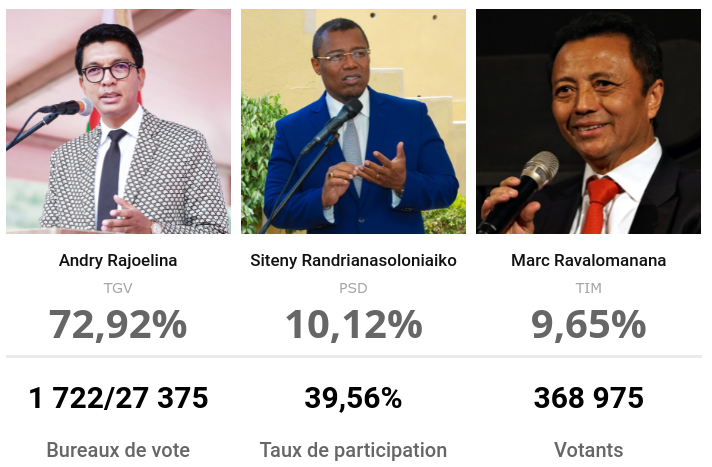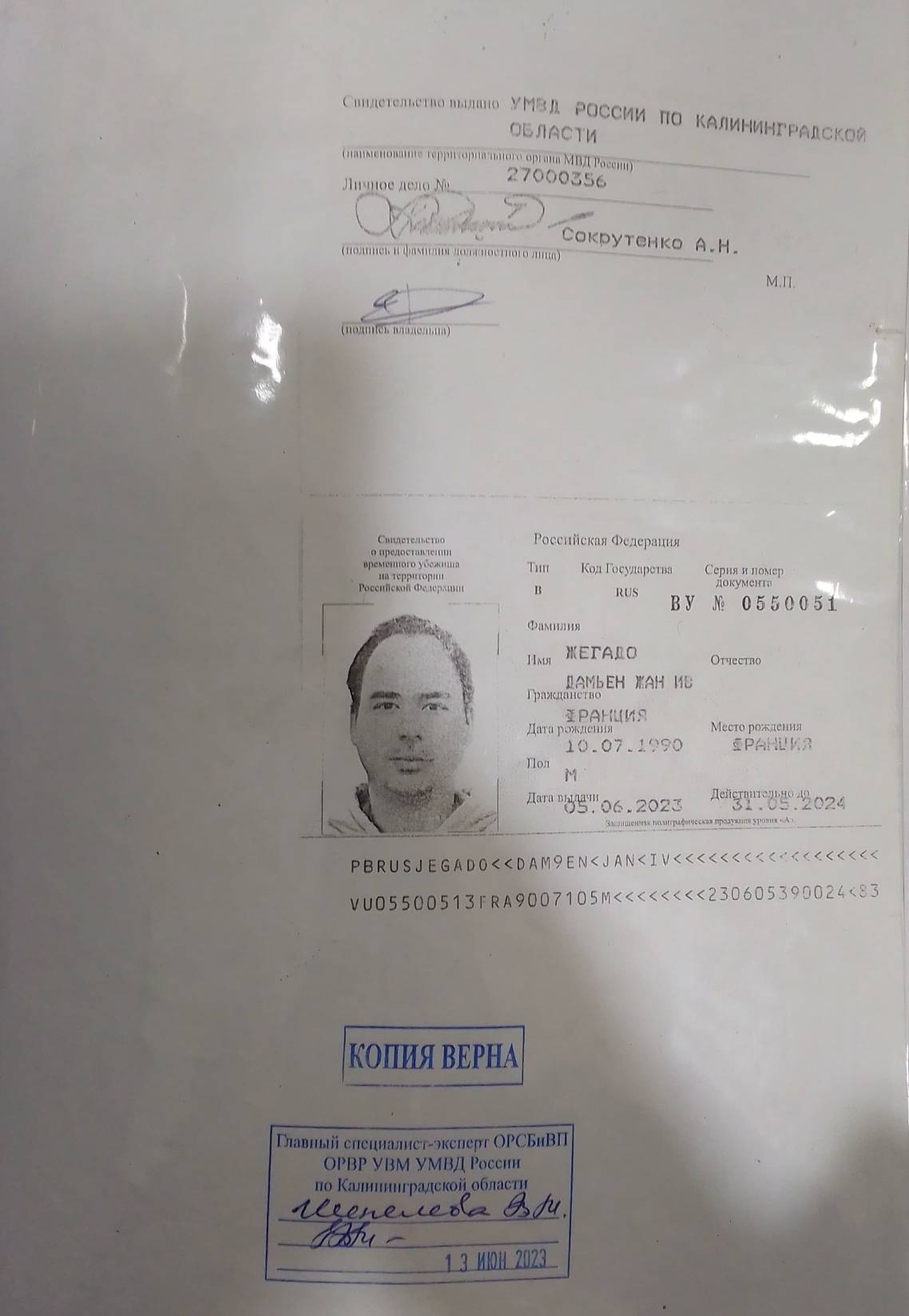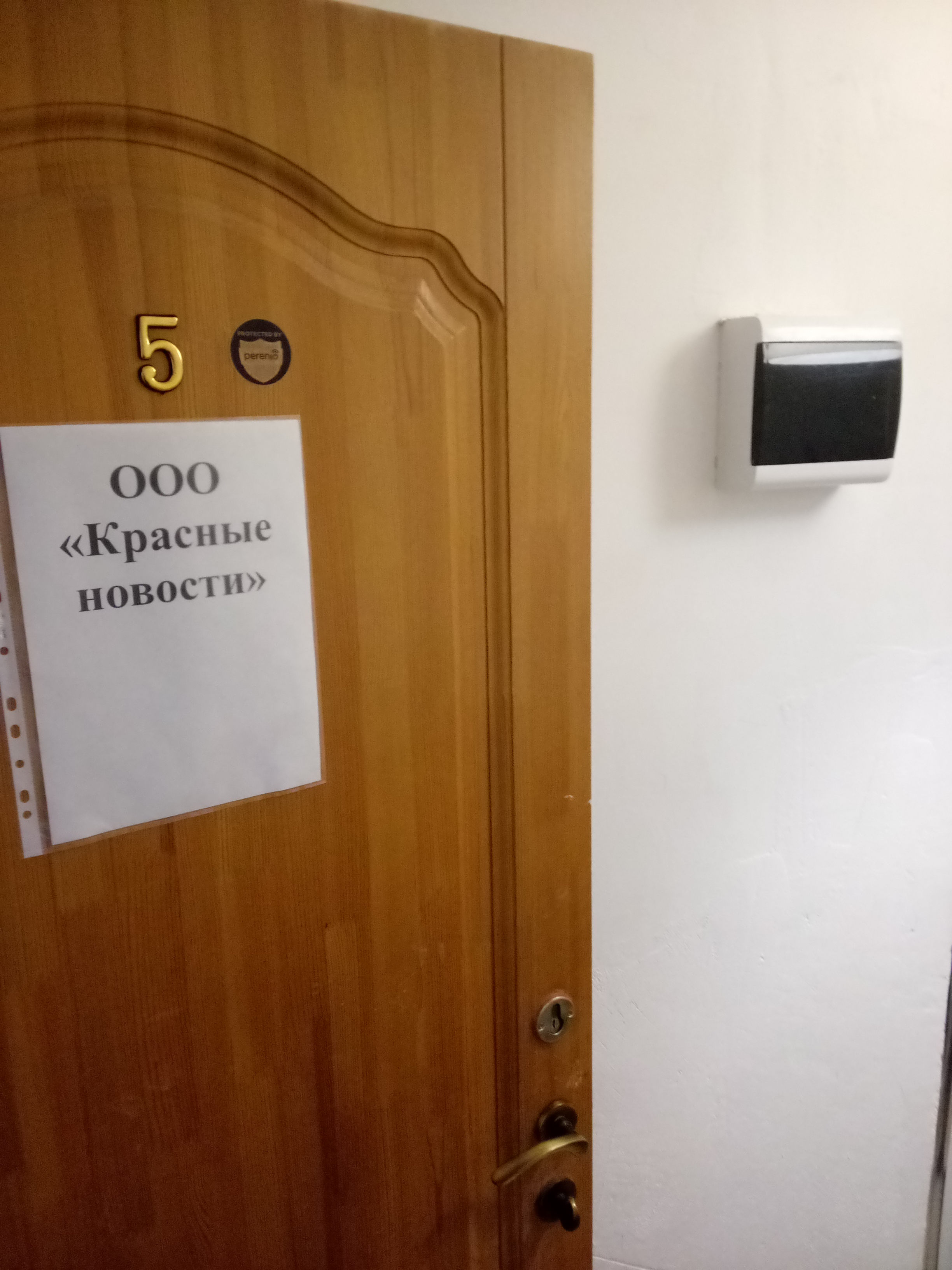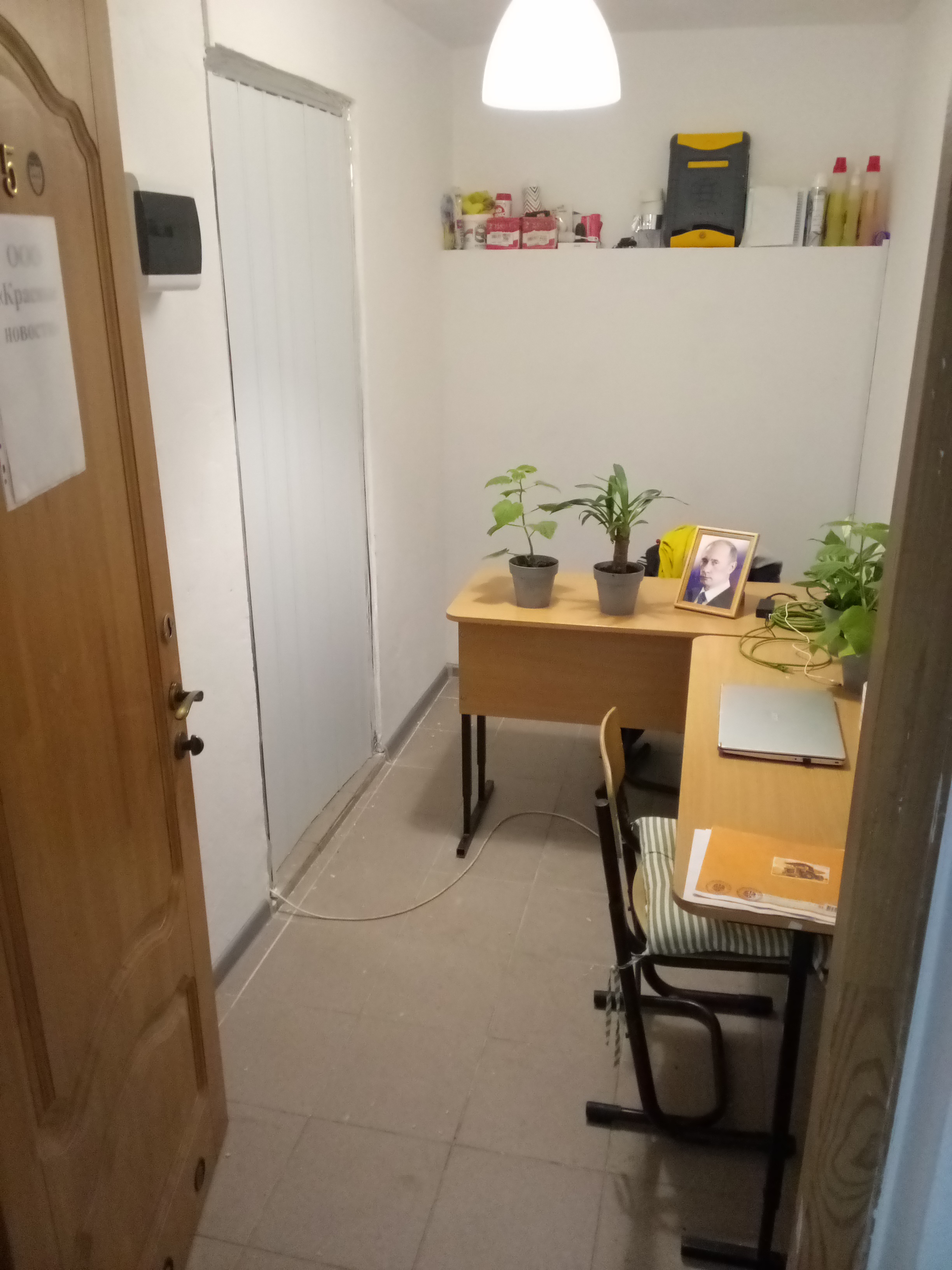Blog layout
First Results of the Malagasy Presidential Election

We are waiting the results of the Madagascar Presidential Election and confirmation of the results, Andry Rajoelina Won with 72,92% of the votes according to the first results but Marc Ravolomanana didn't comment the results, as we are surprised that he finally run for the Presidency depsite the Boycott.
Our Staff will publish the Interview of Marc Ravalomanana there and also the interview of others main candidates regardin the results of the election and their futur Political plans and attitude toward this results.
Marc Ravalomanana Revenge ? 2023 Madagascar Elections

Will 2023 be the year of the Great Christian Madagascar Leader coming back to Power ? Marc Ravolomanana Did is fortune with the Tiko Group, a successful Group that makes Money in differents fields of the Madagascar Economy in the 2000" Years, he created Job's for the Malagasy's and Factory's, at that time the rate of 1 EUR was around 2500 ARIARY, Marc Ravalomanana born near the Capital Antananarivo, he born in a modest Familly and was at Christian School During his Scholarship (source: Wikipedia)
Andry Rajoelina did his Fortune and his Reputation when he was Disk Jokey in Antananarivo, he also got the Mayor of Antananarivo position prior his presidency. He is well known in the World due to his Covid Organics Natural Drink that saved the life of millions of Malagasy's during the Covid 19 pandemy.
---------------------------------------------------------------------------------------------------------------------
Dada as his supporters call him was one of the most successful President in the Madagascar history, he was forced to leave the Power due to a Millitary coup of 2009 when Andry Rajoelina get to Power, His Rival from the Merina social group as well as Dada.
Personnaly i am not involved in the Malagasy Politics, I consider Marc Ravalomanana as a Person on the same principles as me and with an experience to Manage the Red Island, His Rival Andry Rajoelina also have some experience, i also respect him due to his efforts during the Covid19 to save the life of Malagasy with the Drink Covid Organics and to export his natural solution.
Marc Ravalomanana was ejected from Power on a "Coup d'Etat" under Andry Rajoelina and his Partizans in 2009, He was force to live Madagascar and leave in South Africa Mainy Years, During that time and i saw it during in last 2012 trip to Madagascar, The country fall in extreme Poverty. Marc Ravalomanana is a Successful Entrepreneur on the "Red Island" that created jobs for Malagasy's with his industrial and trading company Tiko Group.
I can note that during his 7 years of Power 2002-2009, he double the Malagasy GDP from 5.35 Billions USD to 10.72 Billions USD, After his forced departure from Power the Malagasy economy goes Down, the GDP grown again from 10.6 Billions USD to 15.76 Billions USD, GDP growth only by 50% between 2009 and 2013 (14 years) and do not follow the demography of Madagascar, that is honestly a very weak performance of his successors.
The first Round of the Malagasy Presidential Election is set to start the 16 November 2023.
Update : Marc Ravalomanana will not present himself for the Malagasy Presidency, due to a fraud suspicion regarding this election, he invited Malagasy not to participate to this election, the 10 others candidates told the same.
French Farmer Simple Life in Chuvash Republic

Today i present you a French Farmer, his Name is Nicolas, i am doing an article on him as Director of Red News LLC because his life interested me and can interest you.
Short Biography of Nicolas (VillageRusse) :
Nicolas is a French Man that immigrated twice in the Russian Federation, he is in his 40" he first was Married to a Russian Women and lived in France, he was a Policemen during a long part of his life, then because of insecurity in France and because like many people's he didn't support to live in France he decided a decade ago to remove to Russia and lived 5 years in Kazan where he tried to open a Bread Shop Business and trade french style Bread's but as he told himself in his Youtude Channel he were unable to successully launch this Business because he didn't have a Good Business Plan and then lost around 60 000 EUR in this project in Russia (Money he got from his previous Policemen Position in France after leaving the Job) Because he was that time unsuccessul his Wife decided to ask for Divorce from Him to Be Able to Stay in France.
After this Nicolas Continue to Work in France but decided to Change fully his lifestyle and Recently Remove to a Russian Village where he met his future Wife Elena that work in the Medical Sphere, They live a simple life in the Russian Countryside, His wife is hardworking and work in the Medical Sphere.
Nicolas is now a Successful Farmer that bought his House for 350 000 RUB Near Cheboksary, Russian Federation, he grow up differents animals for Milk and produce Cheese, he is fully involved in the agriculture sphere and he his Happy of his Life with his Wife Elena.
He also is a Person with a Charity Mindset as he try to help Russian Childs with French Lessons and also support some Russian Familly's, especially that one's that with Injured Soldiers in Russian War against Ukraine.
Link to Donate Money for his Charity Project (French lessons for Childs) : https://boosty.to/villagerussie/donate
Link to his Youtube Channel (French Language) :https://www.youtube.com/@user-cl3jz5sk7y
His Youtube Channel is one of the most popular along French leaving in Russia with more than 11 000 Followers, also he is one of the only person that his doin videos from Russian Village and Farmer Lifestyle, that is why we are doing an article on him.
I will translate with subtitles some of this videos and then post in our Village Life section on our website, his advices can be interesting for any person that wish to life in autonomy or live a simple life in a Russian Village.
Interview with Octagon Media Saint Petersburg

Link to article : https://spb.octagon.media/istorii/sbezhavshij_iz_kieva_francuz_zapustil_v_kaliningrade_krasnye_novosti_.html?ysclid=louai029zu84219680
I was pleased that Octagon Media St.Petersburg paid attention to me as a Journalist partner of Russian Media and Also independant Journalist that opened is Small Media company in Kaliningrad Russia.
I must announced that i was not able to physically meet with Octogon Media, We did an interview by phone. This article is right, unfortutately currently i still didn't get the original of temporary asylum certificate, i just got a confirmation letter for temporary asylum from the Head of MVD in Kaliningrad and a certified copy of asylum certificate, then when doctors will give me necessary documents i hope to get this document and then be later able to establish permanently in Russian Federation.
In this article i must say that it was not mentioned that my familly desapeared in Ukraine, and i must add that during my last trip in Ukraine in January/February 2023 i were kidnapped, robbed and fighted in Ukraine by 3 Millitary's at one border checkpoint with Moldova (Palanca), then helded by Police in Kiev Oblast for around 1 Month that is why i was forced to leave urgently, i go to Russia as the closest neutral state and stable state to ask exceptionaly to Grand me Political Asylum status as Poland refused to grand me Resident Card, and to date it's likely French Government Revoked my nationality as i got no support from French ambassador when i goes to their ambassy in Kiev to report my problems and also no support to got a Passport.
To get this asylum in Kaliningrad FMS it was complicated as i got no support in this actions, i was in need to find an interpreter by myself and pay him and find all informations by myself, also they didn't issue me a Political Asylum as i asked as my case was Political but simple temporary Asylum for a year that can eventually be renew up to 3 years, Also i ask some help to find my familly in Ukraine to Russian branch of Red Cross and for my rights for Asylum in Russia but they were not able to support me in any questions i send or ask.
I am currently a life and i have the goal to be able to purchase a Tiny flat in Kaliningrad within 1 year and be able to set my media office there and employ Russian Staff in this media with the allowance of Russia to establish permanently in your Country.

asylum certificate copy, valid till next year
Fortunately i got an Antarctica World Passport Made in 2022 «La Vilette, Paris» as well, as currently my childs David and Odri all of them issued by the University of Arts of London, it is not a nationality but it can be valid to travel or stay in some countries, I recommand stateless people's or people's from unstable state to get such additional document in case of their nationality is at risk or will be revoked legally or unlawfully, Currently This is my main travel document now as my French Passport is likely not to be valid and void according data i received from Banks and others financial institutions.
Great Thank You to Lucy + Georges Orta for their Great Art Work under supervision of the University of the Arts of London. Link to their registration site : http://www.antarcticaworldpassport.com/en/
Премиальные ИТ-услуги

Наша компания предлагает ИТ-услуги в области разработки модулей, плагинов и дополнений для самых популярных CMS Joomla и Wordpress.
В настоящее время мы работаем с 2023 года в сфере ИТ, работаем из России и в основном обслуживаем российский рынок, а также зарубежные рынки.
Наша основная специализация:
1- Создание веб-сайта
2- обновления по работе веб-сайтов и управлению веб-сайтами.
3- Создание шаблонов, плагинов и модулей для самой популярной CMS.
С нашей компанией сотрудничают более 10 активных программистов, способных обеспечить быстрый и надежный сервис, мы активны и работаем 24/24 часа, 7/7 дней.
почта: This email address is being protected from spambots. You need JavaScript enabled to view it.
T: +7 921 109 27 55

Opening of Office in Kaliningrad
Opening of Office in Kaliningrad, Ul. Belinskogo 61A, We will be happy to meet you.
We are open Monday - Friday 09H00 - 19H00.
Please Note that we receive only by appointment, if you have to visit us, call us before or send us an email to fix the appointment time and date.



